Our view at Stack - Pipedrive is a robust CRM platform, offering automation, contact data collection, webhooks, AI-powered sales assistant, email communications, email marketing, and customisable sales pipeline workflows.
Your business’s success depends on how customers feel about your brand, products and service.
Tracking customer sentiment is essential to determining whether that feeling is positive or negative and whether quick action is needed to bring it back on track.
In this article, you’ll learn how to measure customer sentiment and turn those insights into customer experiences that inspire lasting loyalty.
What is customer sentiment? A definition
Customer sentiment is a broad measurement of customers’ emotions and opinions about your brand based on their interactions with it. You can measure sentiment for the brand as a whole or learn how customers feel about specific products and marketing campaigns.
It’s typically a single metric, presented most often as positive (i.e., the customer is happy), negative (the customer is unhappy) or neutral (the customer is indifferent).
However, given the complexity of customers’ emotions, a lot goes into understanding where they fall on the sentiment scale.
In reality, all aspects of the customer experience (CX) influence a buyer’s overall brand sentiment, from early sales and marketing touchpoints to purchasing, onboarding and customer support.
For example, if they receive highly relevant product recommendations, purchase easily and find your solution intuitive (meaning they get value fast), their brand sentiment will likely be positive.
As a result, they’ll likely keep using the product, buying from you and telling others about their experience. Their positive sentiment makes them more valuable to your business.
On the other hand, if someone has a series of bad experiences with your company and product, they’re unlikely to continue spending with you and may even warn others to stay away. In this case, their negative sentiment damages your business.
Your ability to gauge emotional responses to smaller interactions is crucial to understanding whether people feel positive, negative or neutral about your brand as a whole.
Recommended reading

Learn the tried-and-true techniques to get sales referrals
Why you need to measure customer sentiment
Measuring customer sentiment means paying close attention to your customers’ feelings. This approach makes your business more customer-centric, which improves profitability.
Deloitte found customer centricity makes businesses 60% more profitable. Meanwhile, other studies highlight the value of great experiences and service, two key aspects of fostering positive sentiment.
Customer sentiment includes other ways of assessing customers’ feelings that you may already be using, like customer satisfaction (CSAT) surveys and net promoter scores (NPS). As a result, it provides a more holistic, qualitative view of buyer happiness while helping you spot broader issues that need addressing.
More specifically, measuring customer sentiment will allow you to:
-
Understand customer needs. Learn what people like and dislike about your products or services, then tailor your offerings to meet customer expectations.
-
Improve buyer satisfaction. Address issues before they escalate to keep customers happy, engaged and unlikely to switch to competitors.
-
Enhance customer loyalty. Foster positive experiences to build high-value, long-term relationships with your ideal customers.
-
Drive business growth. Encourage happy customers to suggest your business to others, driving new sales and cost-efficient growth.
For example, an e-commerce firm might learn from survey responses that many buyers need help navigating its product catalog.
This feedback prompts the company to redesign its website and recommend specific items through targeted pop-ups, streamlining the overall shopping experience.
The change, informed by sentiment analysis, helps engage existing customers and draw new ones who would’ve otherwise gone elsewhere.
6 ways to better understand customer sentiment
Sentiment may be a single metric, but several methods of information gathering inform it. Use qualitative and quantitative techniques to understand how customers feel about your brand.
With that in mind, here are six of the most effective ways to measure customer sentiment.
1. Surveys and feedback forms
Forms and surveys are among the most direct ways of gauging customer views. Both give you quantifiable data that you can analyze quickly to spot trends and improvement opportunities.
There are plenty of tools for running surveys. Here’s what the survey creation process looks like in SurveySparrow, for example:
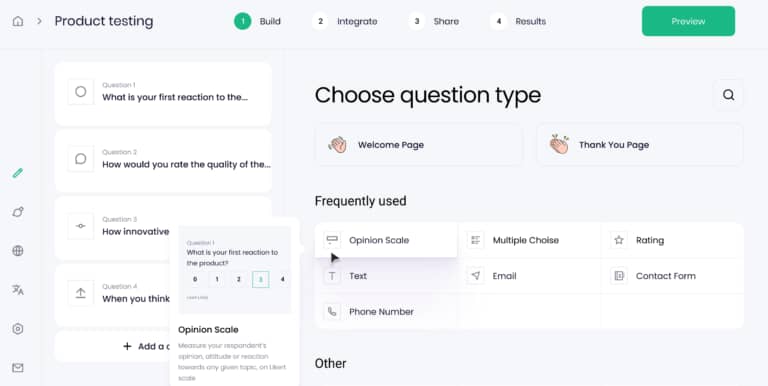
You can connect SurveySparrow and Pipedrive to set up triggers and responses, such as automatically issuing surveys when the deal status changes to closed.
Surveys and forms also give customers simple, low-effort ways to voice their opinions, helping them feel valued and heard.
For example, after a purchase, you might send an email with a short survey asking customers to rate their shopping experience and make any additional comments. You could even automate the process using a customer relationship management (CRM) or email marketing tool.
Email isn’t the only way to deploy surveys and feedback forms. You can also use SMS, website pop-ups and in-app prompts to optimize response rates.
Whichever channel you choose, don’t ask for too much of your respondents’ time. As market research firm Kantar explains, “shorter surveys – especially those that can be completed in 10 minutes or less – yield higher response rates.”
2. CSAT and NPS surveys
Customer Satisfaction (CSAT) and Net Promoter Score (NPS) are two established survey types that businesses of all types and sizes can use to understand how customers feel.
CSAT measures customers’ feelings about a particular interaction or purchase. It involves asking questions like, “How satisfied were you with your recent purchase?”
Respondents can answer using a simple scale like this one:
-
Very unsatisfied
-
Unsatisfied
-
Neutral
-
Satisfied
-
Very satisfied
NPS, meanwhile, measures overall customer loyalty (loyal customers generally express positive customer sentiment).
It uses the question, “How likely are you to recommend our business to a friend or colleague?” Respondents then rate on a scale of zero to ten, with scorers segmented into promoters, passives and detractors.
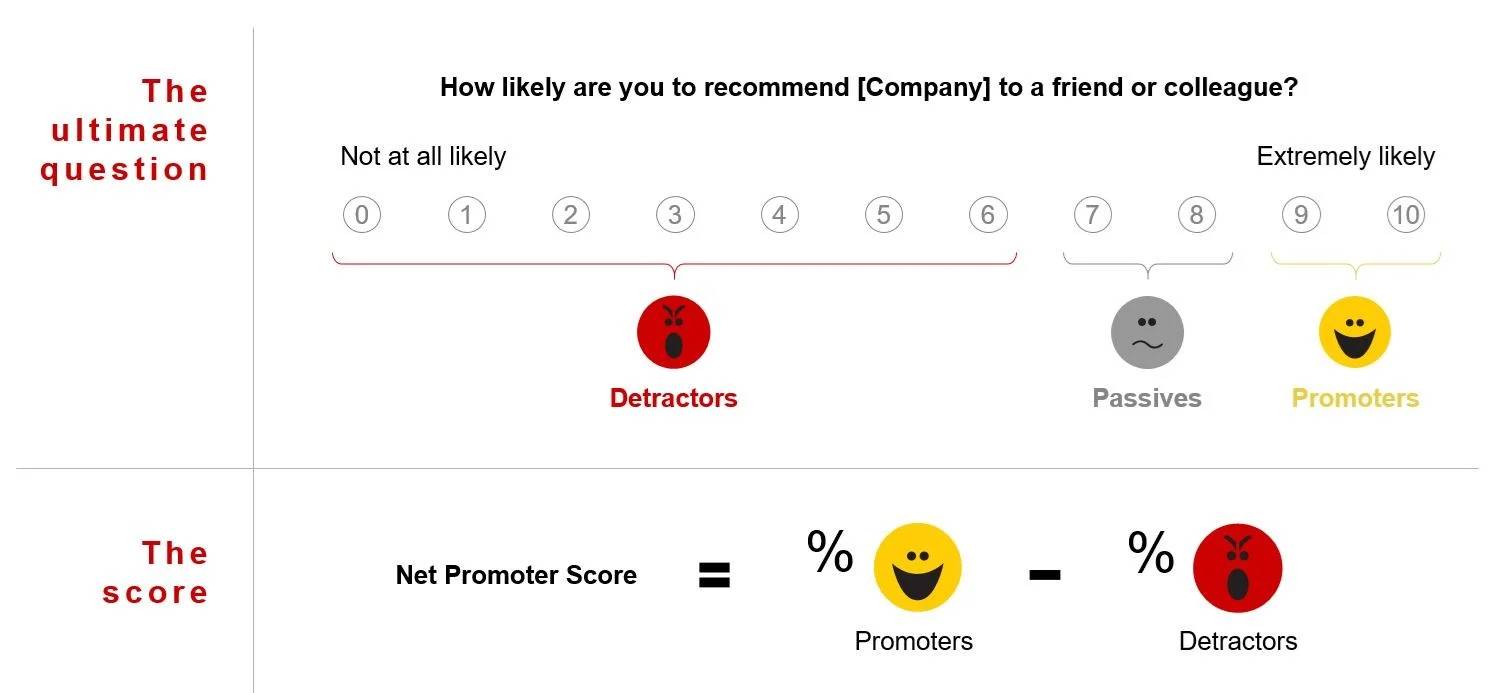
Both CSAT and NPS surveys give you quantitative data that will help you spot patterns in customer sentiment.
Moreover, comparing your scores to industry benchmarks makes it easier to set meaningful targets for your team to work toward.
You can use dedicated CSAT and NPS software to distribute surveys and, in some cases, access those industry benchmarks to measure your business against them.
Note: Bain & Company, co-owner of the NPS trademark, found a strong link between high net promoter scores and faster business growth.
3. Social media monitoring
Monitor social media mentions, comments and messages for real-time insights into customer feelings about your brand.
The simplest and cheapest way is to search for your brand name on platforms like X, LinkedIn and Facebook (depending on where your target audience spends the most time) and read through the results.
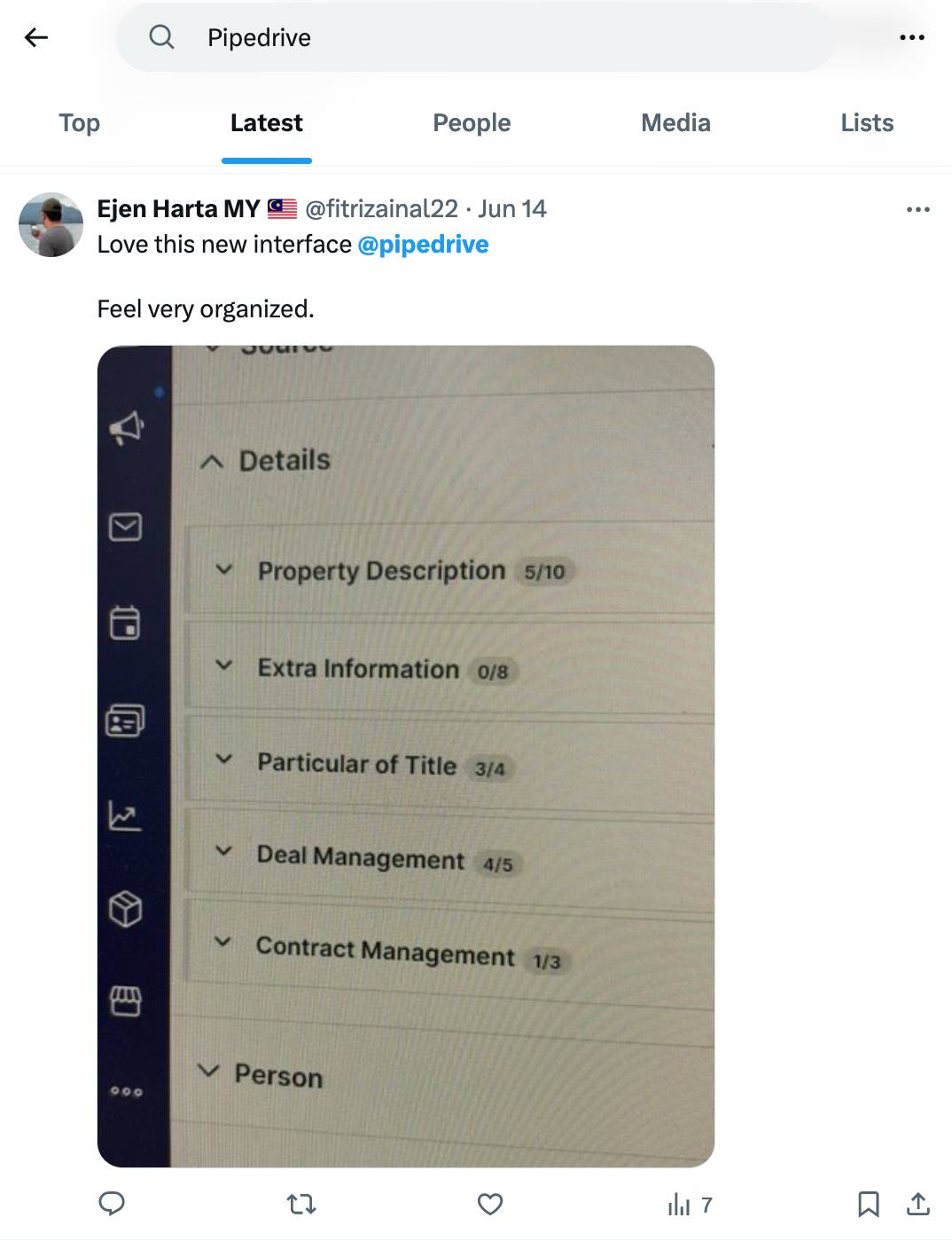
However, social listening tools streamline the process by notifying you of new product and brand mentions and analyzing the sentiment for you.
Here’s what that looks like in Sprout Social, a popular social listening app:
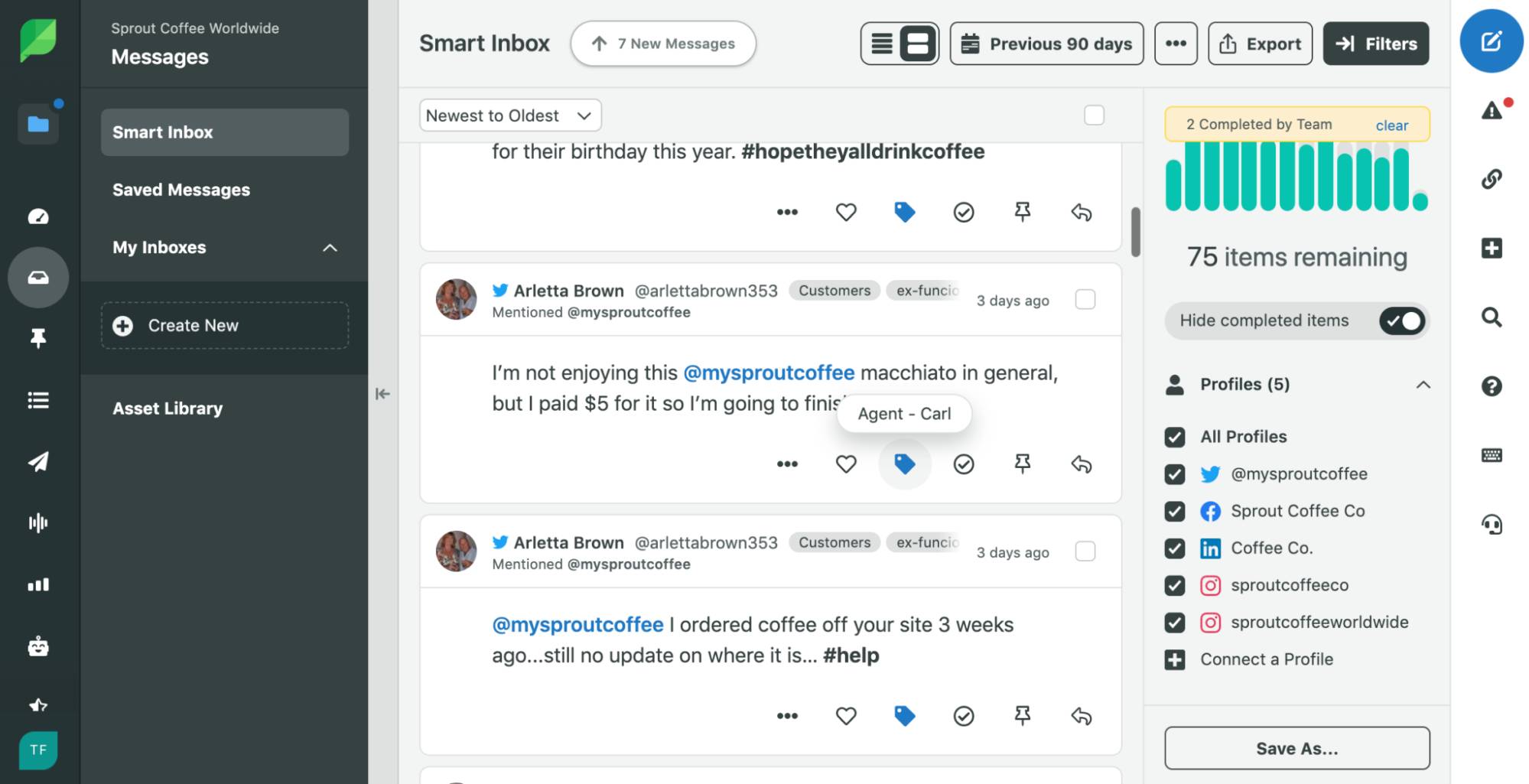
Other popular social listening tools include Hootsuite, BuzzSumo and Brandwatch. Many offer free trials so you can see what works best for you.
Whichever method you choose, manual or automated, look out for opportunities to interact with prospects and customers directly. Responding professionally to both positive and negative comments shows you value users’ feedback and want to improve their experience.
4. Customer reviews
Online reviews offer unfiltered customer opinions, highlighting what customers love and where they see room for improvement.
Monitor and respond to reviews on third-party forums relevant to your audience, as users will write most candidly there.
For example, Google is a popular review site for all types of customers and businesses, whereas Yelp is more suited to B2C companies. If you sell business software and want to gauge sentiment with reviews, search for your brand or product on sites like G2, Capterra and Gartner.
The following product reviews from G2 suggest positive sentiment among Pipedrive users.

Digging into the complete list of reviews could inspire product updates and support content. For example, when someone gives the product a five-star rating, we could learn what is most helpful about the tool and promote those aspects to prospective customers.
As with social media posts, responding to all customer feedback helps you gain your audience’s trust. BrightLocal found that 88% of customers would use a business that replies to all its reviews, compared to only 47% who would use a company that doesn’t respond at all.
5. Loyalty and advocacy metrics
Loyalty and advocacy suggest positive sentiment, so their associated metrics – like the percentage of buyers who make more than one purchase – will give you a good read on how people feel about your brand.
With that in mind, use a sales analytics tool to track the following sales metrics:
-
Customer lifetime value (CLV). The total revenue a business can expect from a single customer account. An increase signals more positive sentiment.
-
Customer retention rate (CRR). The percentage of customers who continue to do business with a company over a specific period. High customer retention signals positive sentiment.
-
Referral rate. The percentage of sales that come from customer referrals. An increase signals more positive sentiment.
-
Customer churn rate. The percentage of customers who stop using a company’s product or service within a given timeframe. A decrease signals more positive sentiment.
For instance, a significant drop in your churn rate suggests your efforts to improve customer sentiment are paying off. A high or rising churn rate, meanwhile, signals negative sentiment.
Pipedrive’s customizable dashboards make it easy to monitor the metrics that matter most to you (i.e., your key performance indicators, or KPIs) and those that help you gauge overall sentiment.
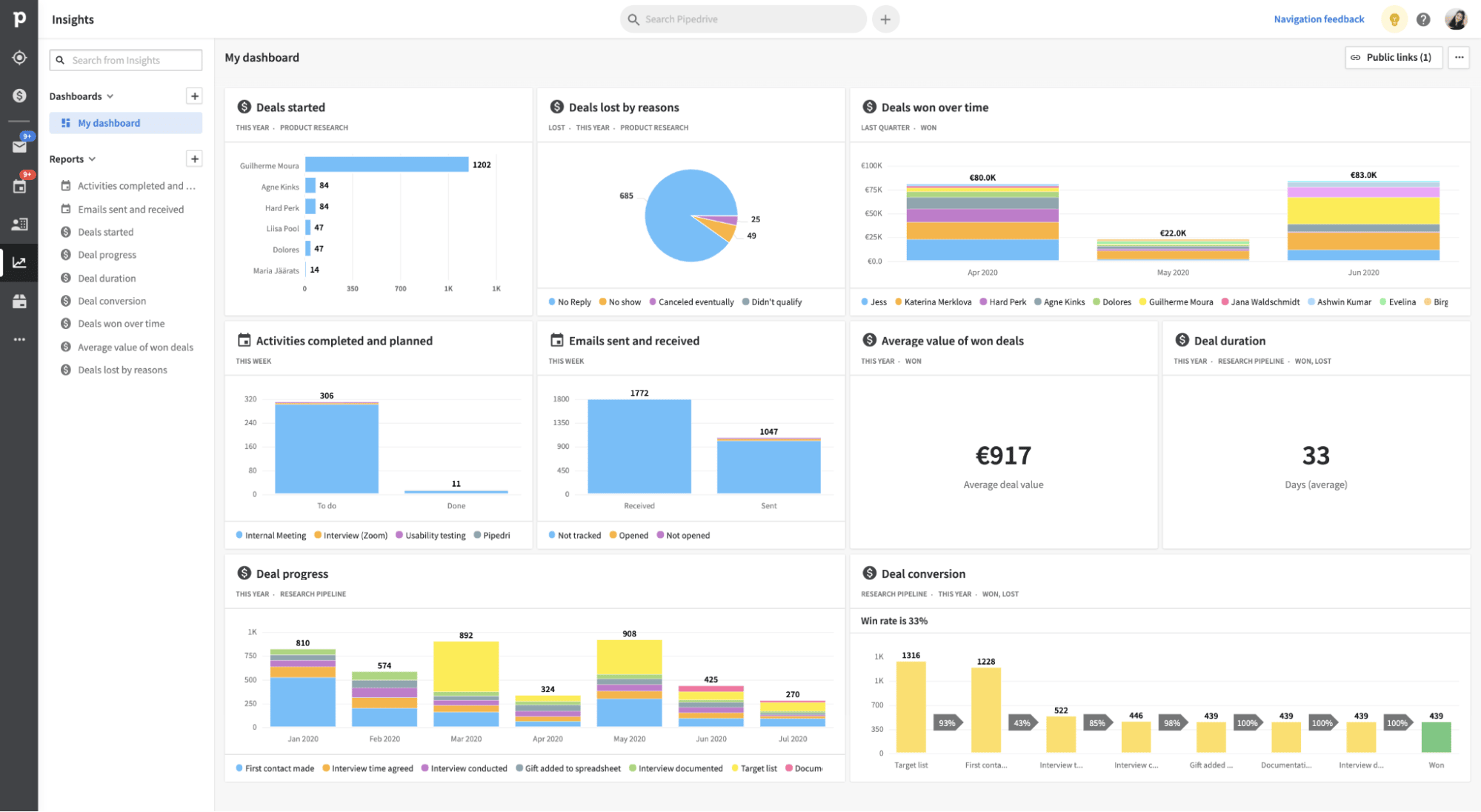
Click on the Dashboards section of your Insights page, then drag the desired reports across. From there, you can customize each report’s position, size and metrics.
6. Email interactions
Analyzing the tone and content of customer emails can help you understand their feelings. It also allows you to spot issues before they negatively impact sentiment.
For example, if a customer writes, “I feel like my concerns aren’t taken seriously”, you’ll know they’re unhappy and that you need to act to maintain positive sentiment (and protect the relationship).
By acknowledging the concerns quickly and offering a solution, like a call to resolve the issue, you can improve that customer’s experience. Then, by tweaking your company’s service approach, you can prevent the same thing from happening to other customers.
On the other hand, an email stating, “I love the new features in your latest update. It has made my work so much easier!” shows positive sentiment. You can use messages like this to understand which parts of your product customers value most, then tweak your marketing and development accordingly.
Of course, sifting through email interactions to look for signs of positive and negative sentiment is incredibly time-consuming.
Sentiment analysis tools that use artificial intelligence (AI) technologies like natural language processing (NLP) and machine learning can help you collect insights faster.
Pipedrive uses AI to summarize email conversations, giving you essential information like customer sentiment so you can make better decisions faster.
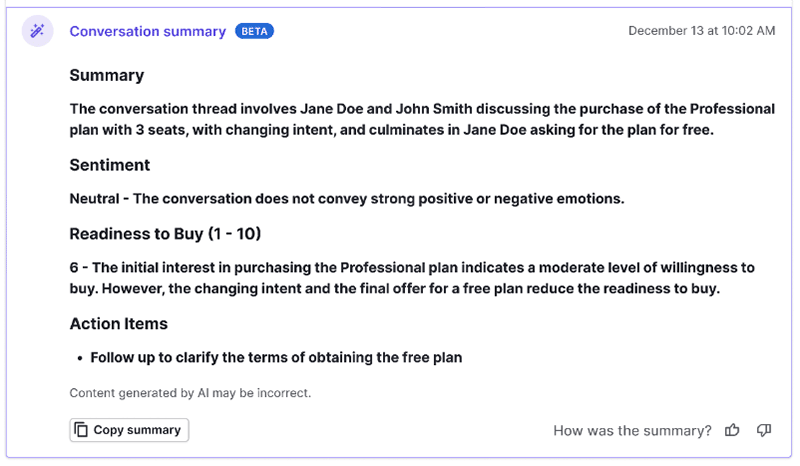
Along with sentiment, you’ll see key themes, a “readiness to buy” score and suggested next steps to help you craft meaningful and engaging responses.
Recommended reading

How to write an apology for an email sent in error
How can sentiment analysis be used to improve customer experience?
Tracking sentiment is only worthwhile if you act on what you learn to enhance customers’ experience of your brand.
Here are four of the best ways to use what you know about your customers’ emotions to increase sales and loyalty.
1. Personalize your customer interactions
Customer sentiment analysis allows you to tailor sales and marketing interactions based on individual preferences and feelings.
This information is valuable since, according to McKinsey research, 71% of buyers expect personalization from brands and 76% get frustrated when they don’t find it.
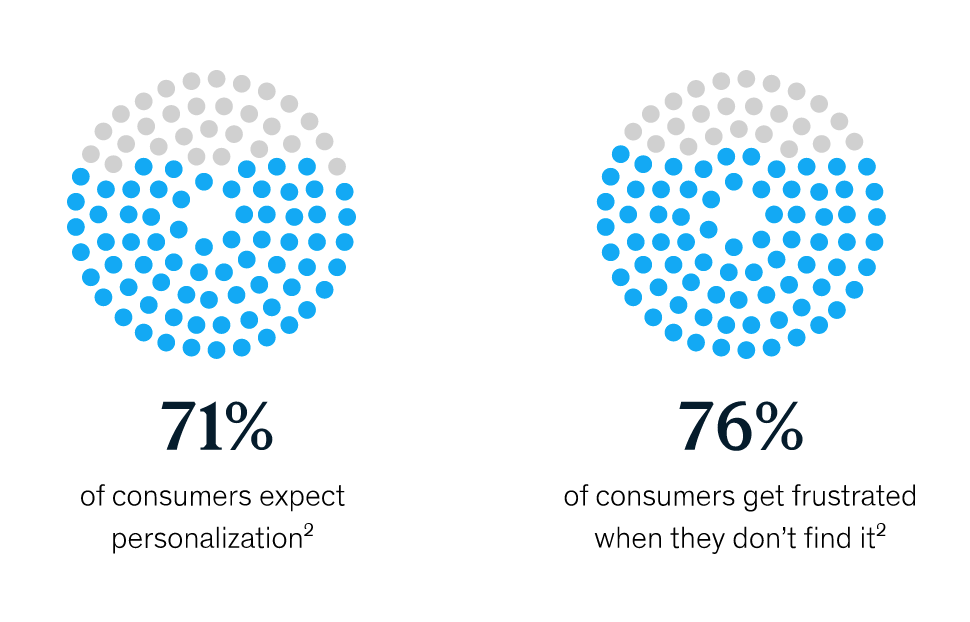
For example, if your sentiment analysis shows that a customer frequently praises a particular product, you can recommend similar items or offer personalized discounts on related products.
You can also personalize the following touchpoints based on how customers feel about your brand:
-
Support interactions. Tailor your support team’s responses, offering more empathy and urgency when needed.
-
Chatbot responses. Adjust chatbot scripts to provide more supportive messages as appropriate.
-
Email campaigns. Customize email content by sending appreciation emails to satisfied customers or special offers to those with concerns.
-
Surveys and feedback requests. Personalize the timing and tone of feedback requests to ensure you approach people when they’re most receptive.
Keeping track of individual buyers’ feelings is much easier when you store all your customer data in a single database.
Centralizing information like customer sentiment scores and specific pain points means client-facing teams can tailor each interaction to achieve better outcomes.
2. Improve your products and services
When you pay close attention to customer sentiment, you quickly learn what people like most and least about your products. That feedback is invaluable for tailoring improvements and meeting customer expectations.
For example, if sentiment analysis reveals widespread dissatisfaction with one feature, you can prioritize fixing the issue to boost overall happiness.
Positive feedback highlights what you’re doing well and can guide future product development just as effectively.
If users keep praising one product’s ease of use, you can use its interface to inspire updates on other products in your range.
Improving your offerings based on sentiment analysis leads to stronger customer experiences and more repeat business.
A public willingness to act on feedback can even improve your brand reputation. Take this feedback-inspired update an Amtrak executive posted on LinkedIn, which includes the line “Our customers spoke and we listened!”:

The announcement received a lot of positive engagement. The executive even encouraged comments at the end of the post to keep the feedback loop going.
When announcing new product launches or updates, be clear when customer feedback is a contributing factor. It shows you value your audience’s opinions.
3. Build targeted marketing strategies
Analyzing sentiment helps you understand the emotional triggers that drive purchases and loyalty. Use this knowledge to create more effective marketing campaigns that resonate with your audience while increasing sales.
Let’s say you make your product more sustainable and announce the news in a marketing email.
Overall customer sentiment improves slightly (which is likely, given most shoppers will pay a premium for sustainable goods), so you know your audience appreciates eco-friendly practices.
Highlighting sustainability in your marketing content could help you win more business while strengthening your brand image.
Emotional selling like this is a powerful tactic. You can target your ideal customers’ behavioral triggers through various channels, from social media platforms to blog posts and in-depth client success stories.
Download Your Sales and Marketing Strategy Guide
Grow your business with our step-by-step guide (and template) for a combined sales and marketing strategy.
4. Amplify customer happiness
Sentiment analysis highlights satisfied customers who are more likely to recommend your brand to others.
Ask these people to share their experiences through reviews, testimonials and social media posts, so you can amplify your brand reputation and build trust.
Collecting social proof is a powerful way to win new business. According to Forrester, 90% of B2B buyers trust recommendations from industry peers.
Accounting software provider QuickBooks relies heavily on social proof to convert website visitors. Reviews and testimonials are both prominent on the website’s homepage:

It means people visiting the QuickBooks website can get reassurance from others like them, not just the brand’s take.
Make it as convenient as possible for happy customers to share their views. For example, when requesting reviews, send a direct link to a review form instead of expecting people to find it.
Make it clear that testimonials only need to be a couple of lines. The less time people have to take during their busy days, the more likely they are to help you. Sending examples with your requests will give people ideas for what to write.
Recommended reading
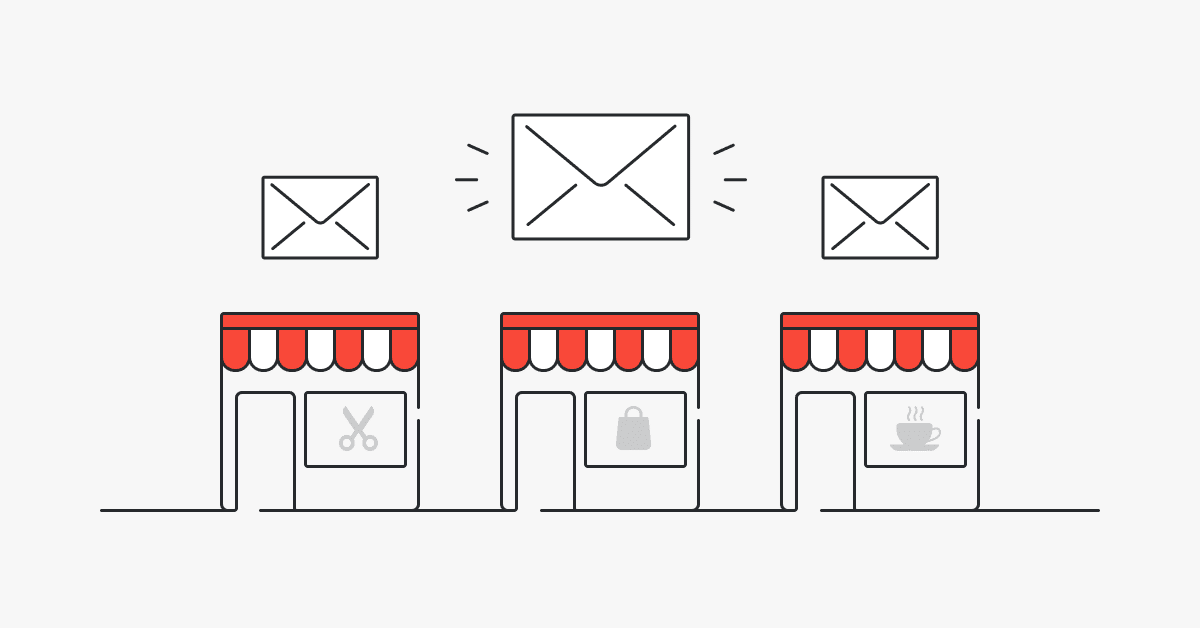
19 small business email marketing tips for successful campaigns
3 technologies you’ll need to track and act on sentiment data
You need certain types of technology to track and act on sentiment data effectively. The following tools will help you gather, analyze and leverage customer sentiment to increase sales and loyalty.
1. CRM software
CRM software is crucial for managing customer interactions. It helps you organize and analyze huge volumes of customer information, making it easier to understand emotions across all touchpoints.
For example, Pipedrive is a database for recording all sales interactions, including email threads, phone calls and meetings. It means you always have the most precise and complete view of how your customers behave and feel. You can then tailor your approach accordingly.
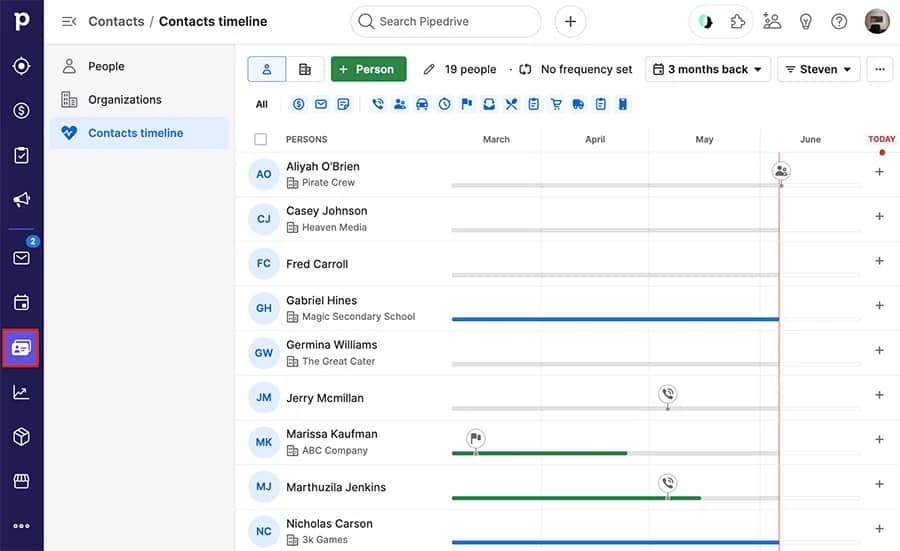
Having easy access to accurate data on your customers’ feelings lets sales, account management and customer service teams make informed decisions that keep sentiment high.
DashThis is one company that uses a CRM to help manage customer sentiment. Pipedrive’s automation and deal management features help the team deliver more personalized services to improve CX, as an account manager from the company explains:
Read the full story of how DashThis uses Pipedrive to stay organized and impress customers.
2. A CSAT and NPS platform
Dedicated CSAT and NPS tools make it fast and easy to collect and analyze feedback through standardized surveys.
By integrating applications like Nicereply, WeHelp and Trustmary with your CRM, you can trigger automated surveys after key interactions to provide the most accurate view of sentiment.
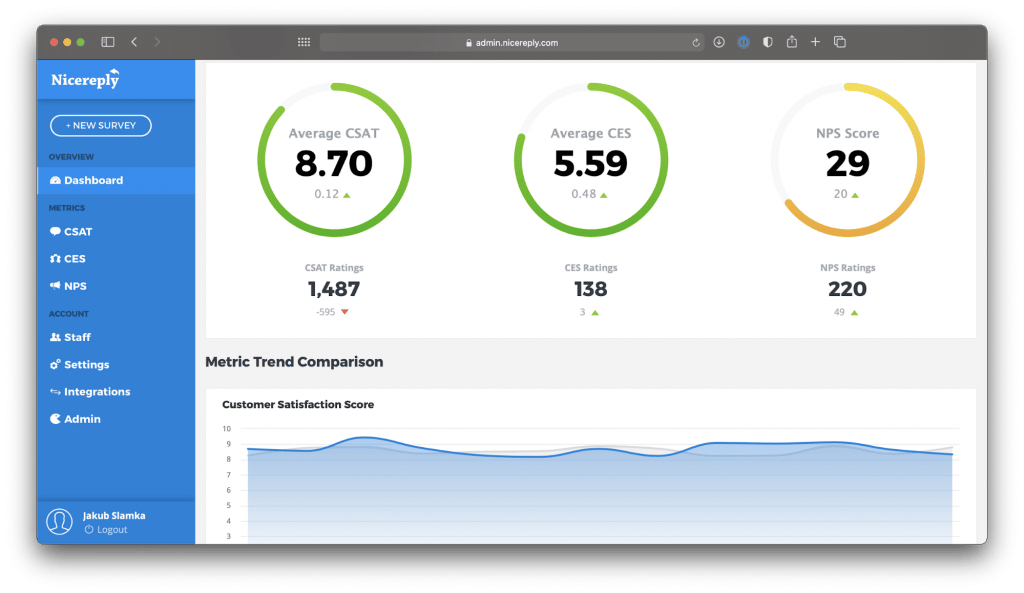
Collect feedback at critical moments like demos, purchases and customer support calls, as these are the times when your customers judge your service most closely. It’s how you’ll get the most thoughtful responses and ideas for improving the customer journey.
Doing all this manually (i.e., without a CSAT or NPS tool) drains valuable time. The right app streamlines the process so you can focus on other responsibilities without compromising insights.
3. AI and NLP
Many large businesses use advanced NLP systems like IBM Watson and Google Cloud Natural Language to extract actionable insights from large volumes of text. With the right budget and technical expertise, you can use those tools too.
However, AI sentiment analysis is also becoming more accessible to smaller teams, helping to level the playing field.
Pipedrive uses AI to generate concise and actionable summaries of your email conversations, allowing you to quickly access the most valuable information – including the respondent’s sentiment and readiness to buy.
Understanding how a customer feels immediately allows you to craft the perfect response to keep the deal moving.
Pipedrive can even help you write compelling follow-up emails. The AI email creation tool generates quick, personalized emails based on your simple prompts.
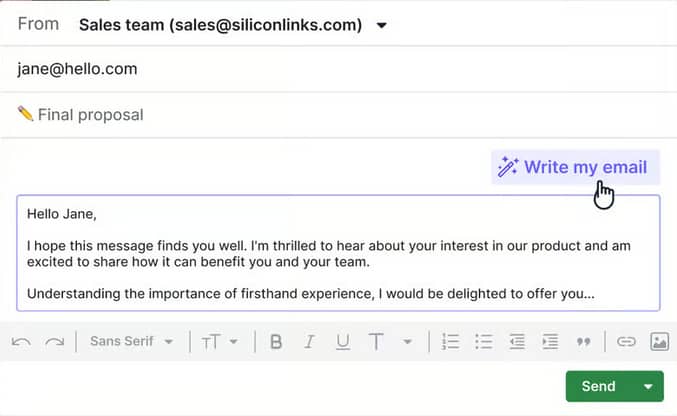
Choose the type, tone and length of the email, then edit the results to your liking.
Recommended reading

23 best email templates for business success
Final thoughts
Understanding and responding to your customers’ feelings is not just an advantage, it’s a necessity.
Use the tools and strategies in this post to track, analyze and respond to customer sentiment, ensuring your business stays attuned to buyer needs and expectations.
By being more customer-centric, you’ll build trust and overcome challenges faster while inspiring the loyalty and advocacy that make your business successful.
If Pipedrive is of interest and you'd like more information, please do make contact or take a look in more detail here.
Credit: Original article published here.
